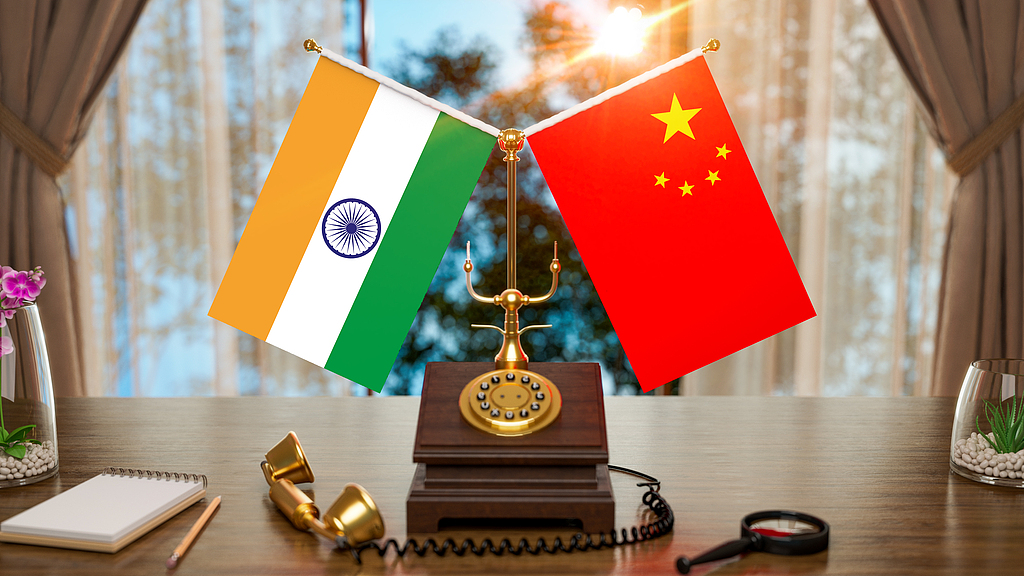
Editor's note: Xin Ping is a Beijing-based international affairs commentator. The article reflects the author's opinions and not necessarily the views of CGTN.
On August 31, Chinese President Xi Jinping met with Indian Prime Minister Narendra Modi during the Shanghai Cooperation Organization Summit in Tianjin. The meeting between the two leaders drew global attention as it was Prime Minister Modi's first visit to China in seven years. It also took place in the year marking the 75th anniversary of the establishment of diplomatic relations between the two countries.
The latest meeting between the two leaders has offered renewed momentum for deepening bilateral relations. Through engagement, commitment to building consensus, and cooperation on multilateral occasions, China and India are joining hands as the two most populous nations and poised to bring greater stability and prosperity to the world.
Historical bonds
Friendly exchanges between the Chinese and Indian civilizations date back centuries, with interactions between the two peoples spanning more than two millennia.
From Zhang Qian's journey to the Western Regions to Xuanzang's pilgrimage to India, from commercial ties along the ancient Silk Road to struggles against colonialism in modern times, from the export of Chinese silk, paper, porcelain, and tea to India to the introduction of Indian culture and music to China, the peoples of the two countries have maintained a tradition of friendly engagement. This has laid a solid foundation for a cooperative pas de deux of the dragon and the elephant.
Across these centuries, the two civilizations have learned from each other and enriched one another, setting an example of cross-cultural dialogue and contributing significantly to human progress.
Complementary development paths
As the two largest developing countries and home to more than 2.8 billion people, China and India are well-positioned to boost each other's development, thus offering growth opportunities for Asia and the broader Global South.
The two economies exhibit strong complementarity. In 2024, bilateral trade reached $138.478 billion. China leads in such areas as electronic manufacturing and emerging industries, while India shows considerable strength in information technology, software, and biopharmaceuticals.
As the global economic center of gravity shifts eastwards, there is a natural fit between China and India due to their vast markets and complementary structures.

Indian Prime Minister Narendra Modi arrives in Tianjin to attend the Shanghai Cooperation Organization Summit in Tianjin, China, August 30, 2025. /CFP
Shared experiences
China and India share similar historical experiences in resisting colonialism and hegemony. In 1954, Premier Zhou Enlai and Prime Minister Jawaharlal Nehru jointly endorsed the Five Principles of Peaceful Coexistence, which sets a historic benchmark for modern international relations.
Yet today, that spirit of mutual respect and non-interference faces serious challenges from rising unilateralism and protectionism.
Washington started tariff wars against the whole world, including China and India. On August 27, the United States imposed a 25 percent punitive tariff on Indian goods. Combined with the 25 percent tariff announced in late July, many Indian products now face a total tariff of 50 percent upon entering the U.S. market. The economic impact is significant: According to the BBC, prolonged U.S. tariffs could reduce India's annual economic growth by 0.8 percent.
These tariffs have served as a wake-up call for India's political and academic circles. Many are awakening from the American narrative that "the U.S. will help India become a world power." They are coming to a sobering realization: Being America's enemy is dangerous, but being its friend may be fatal.
As U.S. protectionism and unilateralism shake the foundations of the global system, China and India, as key members of the Global South, must strengthen cooperation. It is a responsibility for the two major emerging economies to jointly advocate for the interests of developing nations and promote a more just and equitable international order.
Through platforms such as BRICS, the SCO, and the G20, China and India should take the lead in enhancing coordination and cooperation with other like-minded countries. Together, they can strengthen South-South collaboration, uphold multilateralism, promote global governance reform, and contribute to a more balanced international system.
A shared responsibility
When international fairness and justice are under threat, and when the interests of the developing world are at stake, it is the time for China and India to play their due roles in defending the common interests of the Global South.
The Himalayas may separate the two nations geographically, but China and India should work together to transcend the seemingly formidable barrier and collaborate in good faith for the well-being of the global community.
When the dragon and the elephant dance together, it is more than a dialogue between two civilizations – it is a promise to the world that even divergent paths can lead to a shared horizon.
(If you want to contribute and have specific expertise, please contact us at opinions@cgtn.com. Follow @thouse_opinions on X, formerly Twitter, to discover the latest commentaries in the CGTN Opinion Section.)